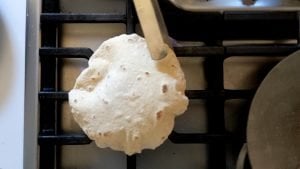Roti are the main flatbread of North India. They are an unleavened bread that has been traditionally eaten everyday. They are also known as rotli, chapati and phulka or fulka.
I started learning how to make these when I was very young, about 4 or 5. I was making them on my own by the time I was 7 or 8. Now, most of the time, I buy frozen uncooked roti from the Indian market and cook them up on my stove.
When I don’t have roti on hand, tortillas will do okay in a pinch. For special occasions, or when I feel like it, I will often make them from scratch.
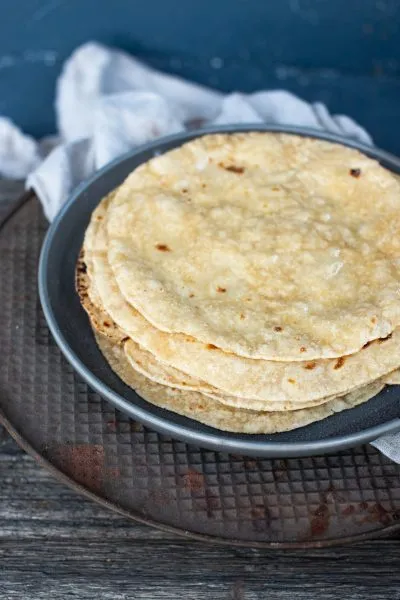
Roti are made from a special type of whole-wheat flour called “Chapati Flour” or “Atta.” The difference between chapati flour and ordinary whole-wheat flour is with the fineness of the grind. Chapati flour is extra fine, which helps make for a softer dough.
If you don’t have chapati flour, whole wheat flour will work, but your rotis will be less delicate, bit thicker, and not as soft.
Roti are regarded in India as a healthy food. They are rich in protein and use whole wheat flour which is much better for you than white flour.
Roti are an important part of every meal. We eat our shaaks (subzi or vegetables) by tearing off a piece of roti (or other flatbread), and picking up bites with the bread.
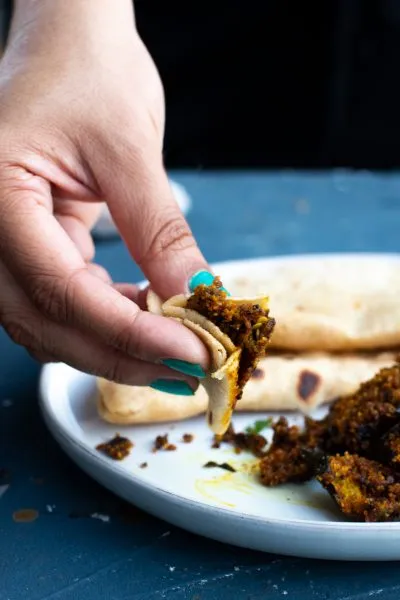
Tips for Getting Perfect Roti
- For a good soft roti, you need a good soft dough. That means incorporating some fat into the flour and adding the right amount of water. Since you are working with flour, the amount of water can vary depending on your flour and environment. See the video to get an idea of what your dough should look like.
- Make sure to let the dough rest before rolling it out
- Use even pressure when rolling out the dough. You need even thickness all around so that it cooks evenly
- Everyone strives for perfectly round rotis. It doesn’t change the texture or taste, it just looks better and shows that you are skilled. It is more important to get the dough and cook right. So if your roti isn’t round, don’t worry about it!
- Ballooning: Your rotis should puff up when you put them on the flame. If they don’t, try rolling them out slightly thicker or adjusting the amount of water you are using.
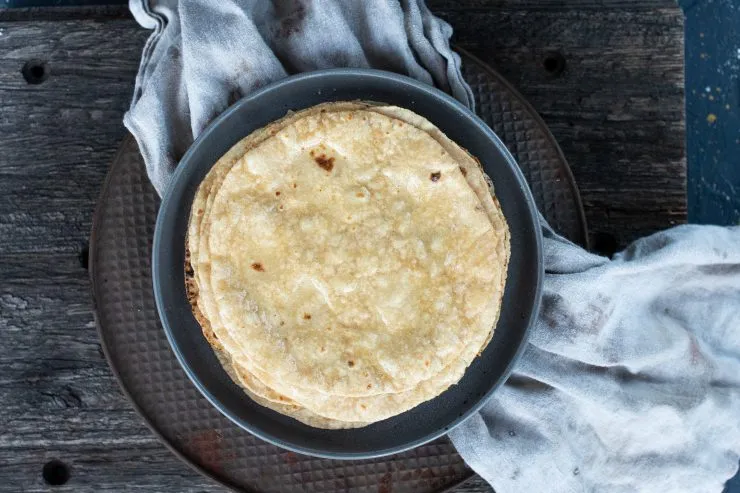
Should you Add Ghee or Oil to Rotis?
Although rotis often do not have ghee or oil in them, many people will add a little bit. My family has always added a bit of ghee. We call it mohan. Oil helps keep any bread from getting stale, but rotis are meant to be consumed fresh.
So what do you do with old, leftover rotis? Make vaghareli roti!

Roti, Everyday Indian Flatbread
Ingredients
- 1 ½ cups atta (whole wheat flour)
- ¼ cup rice flour for rolling
- 2 Tbsp ghee 1 + 1
- ½ cup water + up to 4 tablespoons one at a time to get the desired consistency
Instructions
- In a large bowl add atta flour and ghee. Incorporate the ghee into the flour until you have a sandy texture. And water to form a soft but not sticky dough.

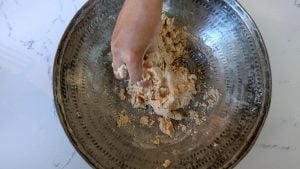
- Roll the dough into a log and optionally, brush a tiny bit of ghee or oil over the dough log.

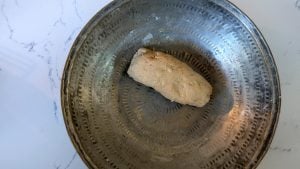
- Cover with a tea towel and let rest for 15 minutes.

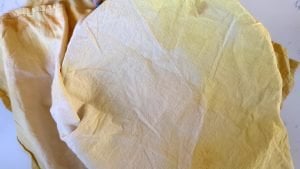
- Break the dough into 12 pieces (or more if you like smaller roti). Roll and flatten the pieces into a puck shape.

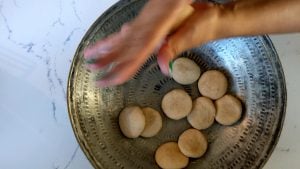
Roll out the Rotis
- One by one, roll out a roti with a rolling pin, applying even pressure from the center out.

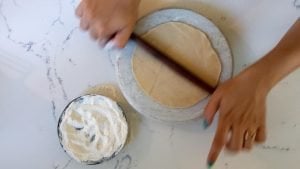
- Transfer the roti to a heated tawa (a flat pan, cast iron is best) on low heat. Wait for the roti to form small bubbles on one side (about 15 seconds. don't let it brown), flip. Allow some additional bubbles to form on the other side (about 8 seconds).

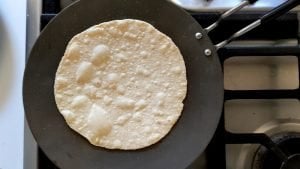
- Move the tawa away and turn the flame to high. Transfer the roti directly to the flame using flat tongs and cook both sides for a few seconds each. It should balloon up over the open flame.

